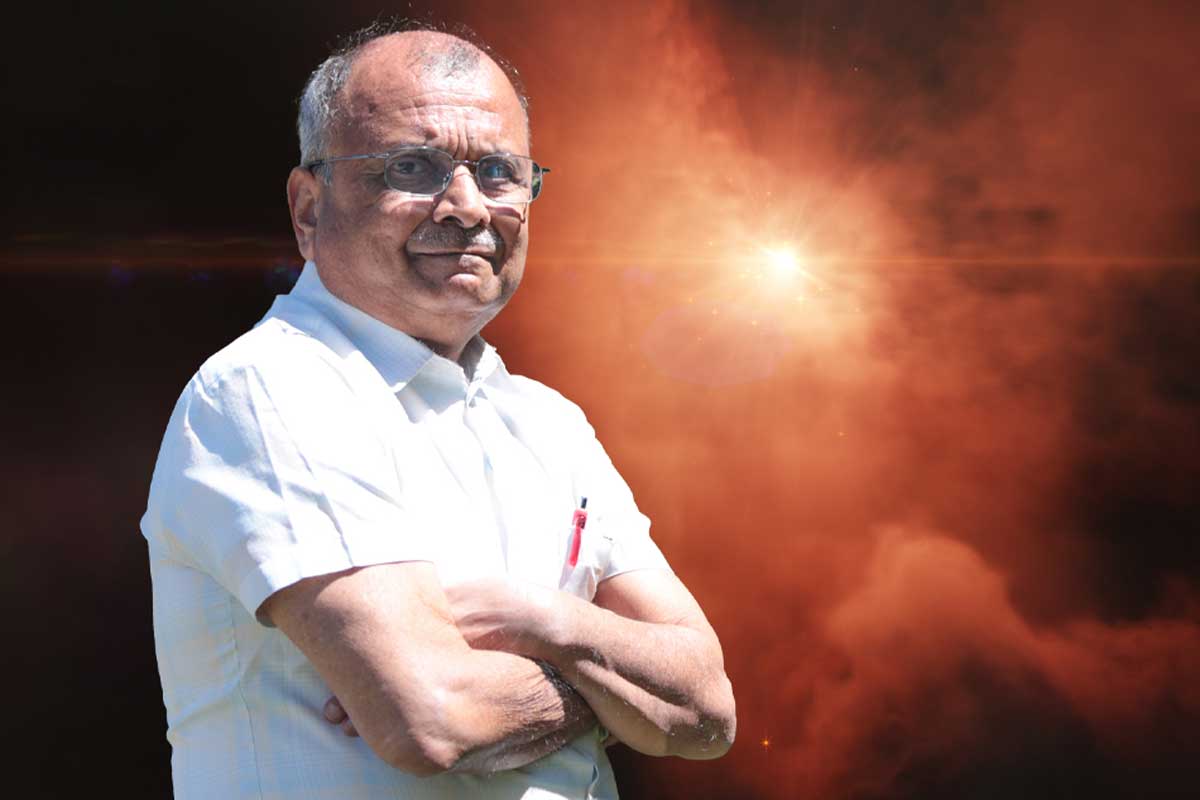Not many people may imagine that an expertise in applied mathematics would make someone a “rock star.” But UCF mathematics Professor Bhimsen Shivamoggi is certainly a celebrity in the world of physics these days.
American Scientist magazine this month notified Shivamoggi that a blog featuring his work — the first systematic theoretical formulation to describe the effect of stellar rotation in driving stellar winds faster — was one of the magazine’s top 10 blogs for 2020.
“It is good to see my work validated and I was lucky I didn’t have to wait as long as my mentor did,” Shivamoggi said. “It is gratifying to contribute to our understanding of solar winds. They control space weather, which has consequences on earth.”
Understanding how solar winds affect the space weather around the planet is critical because it can cause all sorts of havoc. GPS that helps airplanes and vehicles navigate safely and the electrical grid can be negatively impacted. Some solar wind blasts have knocked out cell phone coverage and caused widespread power blackouts.
Shivamoggi caught the space community’s attention late last year. He published a research paper in the journal Physics of Plasmas, in which he proposed a new physical mechanism that explains the effect of a star’s rotation in driving stellar winds faster.
This paper provided a novel understanding of how fast rotating stars spin down. Some of the key premises in his theoretical model were validated by the solar wind data sent back from the sun by NASA’s Parker Solar Probe in December 2019. His journal article was selected as an editor’s pick for 2020. And he’s been receiving congratulatory notes from scientists around the world ever since.
Shivamoggi credits much of his success in this research to the encouragement and mentoring he received from Gene Parker. Parker was the first to point out the existence of solar wind and in 1958 gave an ingenious theory explaining the dynamics of supersonic solar wind. Shivamoggi met Parker, now an eminent astrophysicist at University of Chicago, during an astrophysics conference 10 years ago.
The solar wind concept wasn’t easily accepted by many, and Parker had to wait four years before NASA’s Mariner II confirmed its validity, Shivamoggi says. In 2018, NASA sent the Parker Solar Probe (named for Parker, the first NASA mission named for a living person) to gather data on the solar wind via increasingly close encounters with the sun.
The solar wind data sent by the Parker probe in 2019 indicated that the solar wind rotates around the sun much faster than previously considered, supporting Shivamoggi’s mathematical theory.
Shivamoggi emphasizes that Parker’s encouragement and guidance were crucial to his success.
“Dr. Parker was so reassuring and encouraging,” he says. “And when I was struggling, hearing his kind words from time to time was stimulating. I am lucky and thankful for his mentorship, and I try to do the same for my students. The material is challenging, but I want them to learn. They are the future and I try to encourage them to reach because they, too, can change the world.”
Shivamoggi joined UCF in 1985. He teaches in the Mathematics and Physics departments. He has multiple degrees from MIT and the University of Colorado at Boulder. Before joining UCF, he was a postdoctoral research fellow at Princeton University, the Australian National University, a scientist at the Physical Research Laboratory in India and an associate professor at the Institute of Mathematical Sciences also in India.




